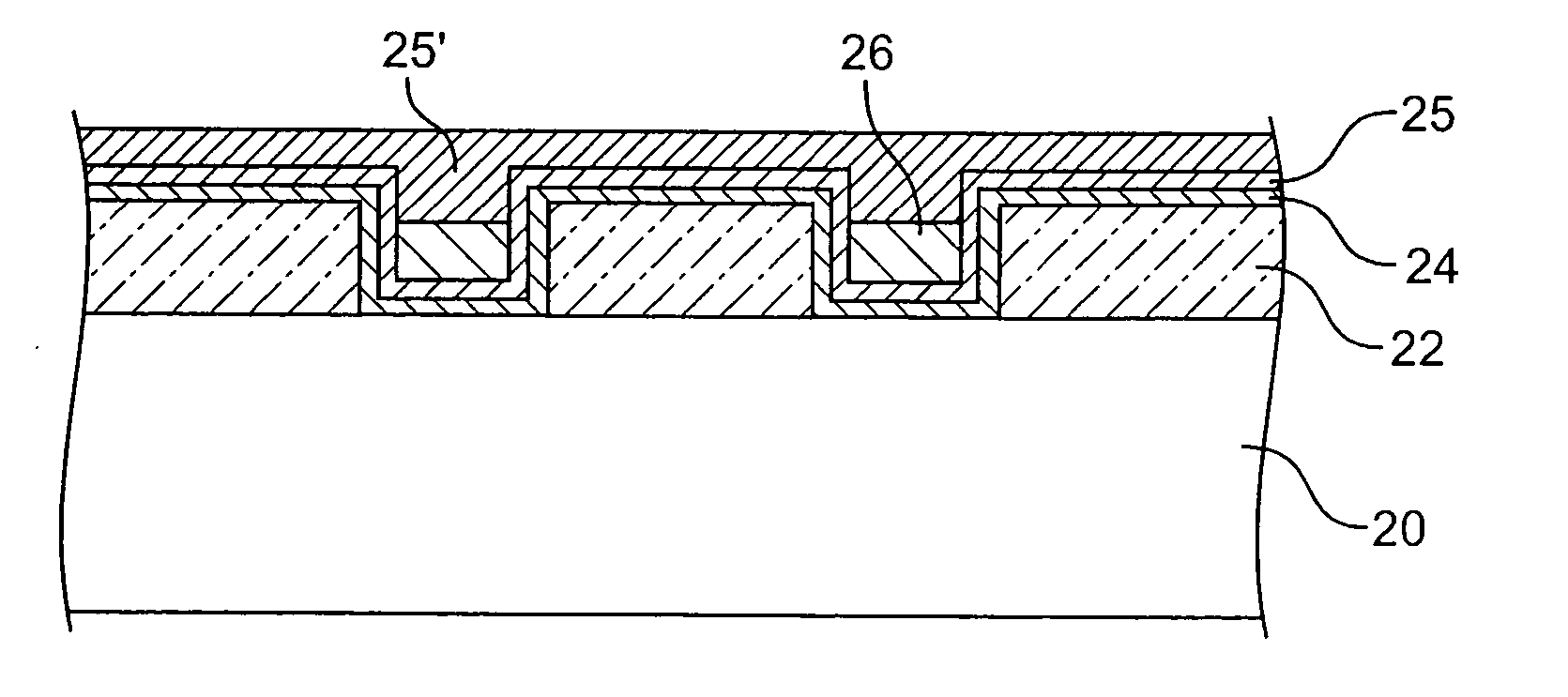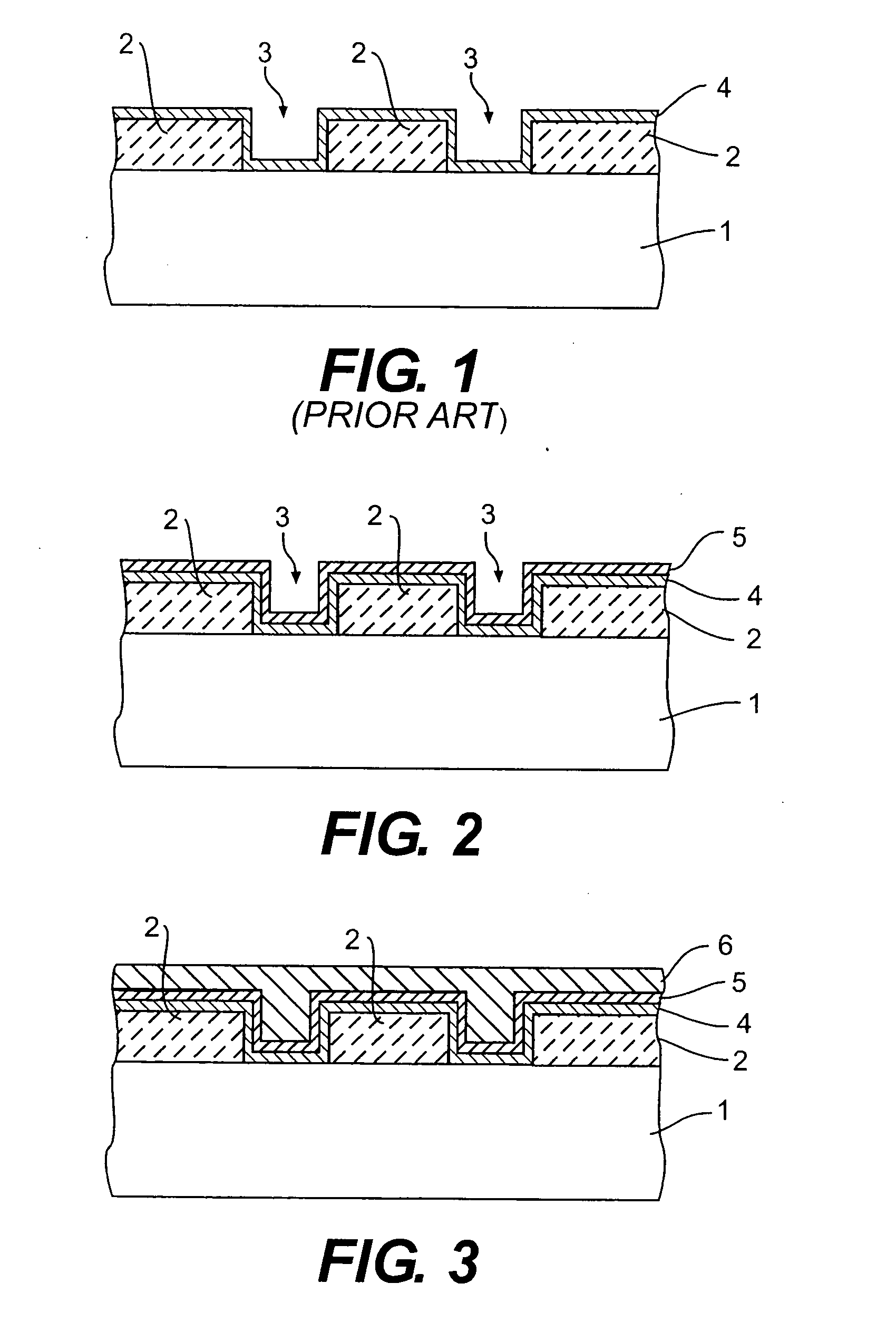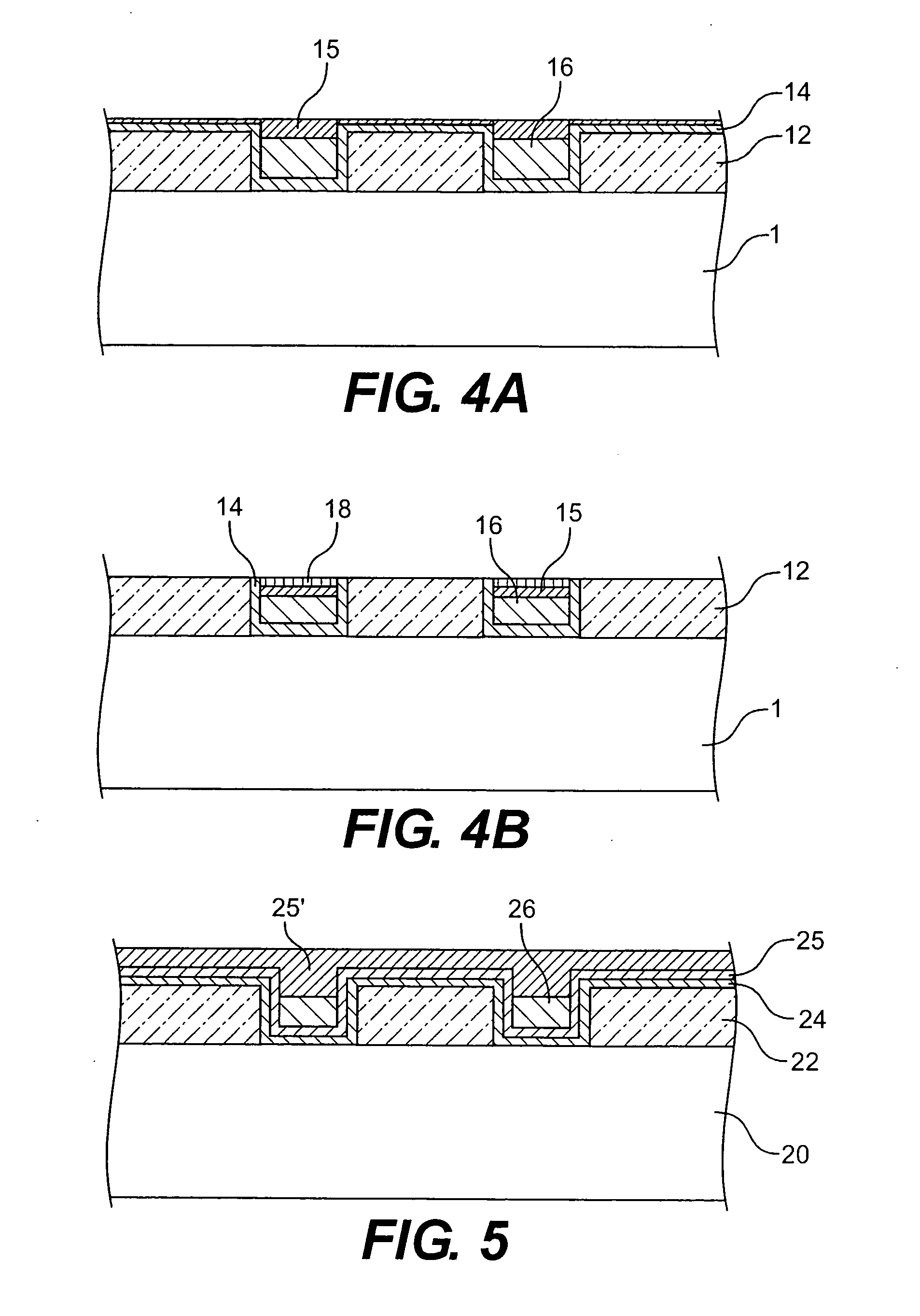Electroplated CoWP composite structures as copper barrier layers
a composite structure and cobalt technology, applied in the direction of layered products, semiconductor/solid-state device details, chemistry apparatus and processes, etc., can solve the problems of insufficient technology for deposition of single-crystalline thin films, difficult control, and many attempts by skilled researchers to obtain effective amorphous materials
- Summary
- Abstract
- Description
- Claims
- Application Information
AI Technical Summary
Problems solved by technology
Method used
Image
Examples
examples
[0050] The CoWP films of the invention were electroplated on a composite structure substrate comprising a blanket p-Si with a TaN / Ta barrier layer, a PVD copper seed layer and an electroplated copper layer of dimension 4×4 cm. The electroplating process included a modified rotating disc electrode controlled by a power supply, which operated with a Pine Instruments system. The modified rotating disc electrode included a metal shaft screwed into a plug which contained a metal top surface and Teflon sample holder with a recessed insert. Four contact pins placed through the plug held the sample in place in the insert and provided the path for the current.
[0051] The agitation of the samples was between 50 and 200 rpm and the current density was varied between 5 and 10 mA / cm2. The pH of the electroplating solutions was varied from 4 to 9 by adding sulfuric acid or sodium hydroxide to the solutions as necessary. The temperature of the solutions was controlled by a double jacketed cell and...
example a
[0059] CoWP film A prepared from bath solution A was deposited at 40° C., 100 rpms, and 6.3 mA / cm2. The deposited film was annealed to 400° C. for 4 hours in forming gas (5% H2 in N2) and showed no crystallinity. The CoWP film A had an atomic percent concentration of 77.6 / 5.9 / 16.5 of Co, W and P, respectively, by RBS analysis, and a film thickness of about 160 nm.
[0060] The x-ray diffraction spectrum of Example A is provided in FIG. 7A. The spectrum was obtained following a 400° C. anneal for 4 hours. A slow run data set (shown as inset) from 38 2θ to 42.6 2θ indicates virtual absence of a crystalline Co2P peak at ca. 41° 20.
example b
[0061] CoWP film B prepared from bath solution B was deposited at 50° C., 100 rpms, and 5 mA / cm2. The deposited film was annealed at 400° C. for about 30 minutes in forming gas. At the end of the 30 minute anneal the film exhibited no crystalline structure by XRD. Following an additional anneal of 4 hours under the same conditions, CoWP film B exhibited very little crystalline structure by XRD (a single, weak intensity Co2P (121) peak; no other phases identified). The CoWP film B had an atomic percent concentration of 70 / 6 / 24 of Co, W and P respectively, and a thickness of about 100 nm.
PUM
| Property | Measurement | Unit |
|---|---|---|
| thickness | aaaaa | aaaaa |
| thickness | aaaaa | aaaaa |
| thickness | aaaaa | aaaaa |
Abstract
Description
Claims
Application Information
 Login to View More
Login to View More - R&D
- Intellectual Property
- Life Sciences
- Materials
- Tech Scout
- Unparalleled Data Quality
- Higher Quality Content
- 60% Fewer Hallucinations
Browse by: Latest US Patents, China's latest patents, Technical Efficacy Thesaurus, Application Domain, Technology Topic, Popular Technical Reports.
© 2025 PatSnap. All rights reserved.Legal|Privacy policy|Modern Slavery Act Transparency Statement|Sitemap|About US| Contact US: help@patsnap.com



